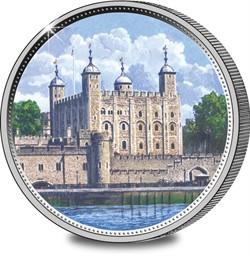-no-button_1000x200.jpg)
 |
Location: London, North bank of River
Thames
Date constructed: Started in 1066
Designers/Builders: William the Conqueror
Function: Originally stronghold and royal
residence
|
Today the Tower of London is a bright and welcoming tourist
attraction. Situated on the north bank of the River Thames, a
stone's throw from the City of London, it is a World Heritage site.
The Tower is where the fabulous Crown Jewels are on display, as are
many other antiquities. Visitors are greeted by "Beefeaters", in
their colourful medieval uniforms. And yet the tower has a dark and
sombre past.
Started in 1066, William the Conqueror built it as a protection
against the "huge and brutal populace". It was just one of dozens
of castles designed to overawe the conquered Saxons. Over the years
the Tower was extended and altered, most notably during the 12th
and 13th centuries. Despite many subsequent adaptations and
restorations, the general layout of the Tower is today much the
same as it was then. The interior buildings are surrounded by two
concentric rings of defensive walls within a moat, which is now
dry. The Traitors' Gate, through which prisoners were brought to
the Tower, was originally built in the reign of Edward I.
Since its construction the Tower has served many functions.
Initially it was an important stronghold and a secure royal
residence. In the 13th century Henry III, threatened by aggressive
barons, often had his court there and even held parliament within
the Tower. The Tudors no longer used it as a residence and in
military terms it was becoming obsolete. From 1100 the Tower had
served as a prison - holding at various times the future Elizabeth
I, the Catholic Martyr Sir Thomas More, the tragic queen Anne
Boleyn and in 1952 the Kray twins, for indiscipline during army
service! Despite its grim reputation not many were executed within
the Tower - just seven before World War I. However, 112 were
executed on nearby Tower Hill.
Over the years the Tower served as an armoury and housed a
menagerie - by 1828 it contained 280 animals of 60 species. Up
until the late 19th century the Royal Mint operated from the Tower
and in the 14th century the Crown Jewels were lodged in the Tower,
where they can be seen today.